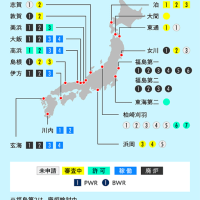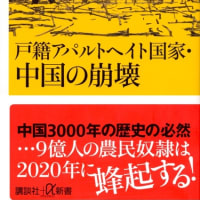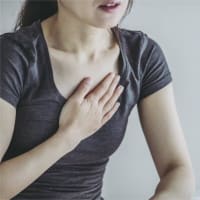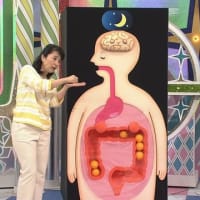This is the report from the front line of FUKUSHIMA.
This is the report from the front line of FUKUSHIMA. Mr.Toshio Urasawa (74)
Fukushima city, where small areas of extremely high –leveled radiation called “hot spots” were found in many area, despite of desires of the residence, decontamination nor monitoring residence’s health due to exposure to radiation are not in progress at all. Today, 9 months after nuclear accident, children and their families are still anxious about threat of radiation.
“I don’t know what will happen in years later, but I am scared..”
“Fukushima residence were abandoned, I think..”
Children in Fukushima, are right next to high-leveled contamination called hot-spots in everyday life. This is the report about the absurd reality for children.
-Children who lives in hot spots.
-Fukushima city
Watari, Fukushima city, 2km away from it’s prefetual governmental hall.Something is happeing in the quite residencial town…
Toshio Urasawa, a residence, 78 years old, is checking a giger counter right in front of his house.
“It is 7.308”
“it’s 8, now”
and a corner of his garden,
“it’s over 30…”
“this is not normal…“
“No, don’t come out, go inside.“
Since the nuclear crisis, he never had his grand daughters to play outside, because it is too risky to get exposure to radiation.
it has been already 9 months since they can’t go outside freely
it has been very stressful for these young people.
“can’t play outside and those radiation that is high…I am scared.”
Mr. Urasawa wants Watari area to be evacuation-recommended zone because of high level contaminations,
but at the public meeting on Oct 8h 2011, the government official said,
“Please let us decontaminate the area first”.
then the local government official of Fukushima city said,
“According to the Government safety standard, we can keep living in this area.”
However, the project of decontamination has not done at all besides some of public facilities.
because storages for nuclear waste has not build yet.
“Our health… how come the government doesn’t protect our health..?“
“How about those people live here to see, with their children and grandchildren?”
We went to streets to schools at Watari area with TakeruArakida assistant professor who teaches governmental policy at Fukushima University.
-a street that children use to go to WATARI elementary school
“Over here? Let’s see.”
“we are actually numbed about high numbers… this doesn’t surprise us anymore..”
then we found surprising numbers!
“what we know for sure is this number is extremely high.”
the giger counter said over 100 micro sievert/hour.
100 micro sievert per hour = 876 milli sievert per year
Standard for nuclear plant worker in the US or Germany is 20 milli sievert per year.
“As you can see, this is the place where anyone can pass by.
Kids would drop a ball in this, too…”
Prof.Arakida was going to build his house right here.
“My house would have been built by now. We were supposed to be moved in by the end of 2011”.
“you can see what happened”.
Many radioactive materials that were released from the nuclear power plant, were washed away by rain, and condensed, that creates many hot spots in Fukushima city.
Despite of the fact that radiation issues has gotten worse, Japanese government on the other hand said on Dec 16th ,2011,
“The nuclear power plant has reached the state of Cold shut down, therefore, we have confirmed the power plants accident itself has been settle down.”
The government has been pushing bureaucratic policies, and those local governments who let this happen are as guilty as the national government, Prof.Arakida points out.
“the local governments, both prefectual and city, all policies are are very much depends on the national government, whatever they said in terms of this accidents.”
“that is the very sad thing, I think”.
“What should have been happening is that for them to stand with residence and think with residence and try to figure out what we can do together. I hope that they would change their ways as soon as possible.
Mr. Urasawa at Watari area, have his granddaughters to wear masks all the time when they are outside, to protect them from inhaling radioactive materials.
Since last month, they have been staying at their relative’s house at night to get away from radiation.
“Really, I am outraged more than lonely…to be forced to have this kind of life.”
In Fukushima city, they haven’t even started children’s health check for internal exposure to radiation. It is supposedly starting after Febrary 2012.
Seeing this reality that children are living in high contaminated area, are we really making effort to protect their future?
The National and local governments are facing to the challenges.
このarticleは最初から英語での裏澤利夫さんの発信です。pfk
福島の現実のホットスポット。
これはFUKUSHIMAの最前線からの報告書です。 裏澤利夫氏(74)
福島市、どこで、非常に高いことの小さなエリア「ホット・スポット」と呼ばれる、水平にされた放射線、多くのエリアで見つけられた、住宅という望みの侮辱、汚染除去、および、モニタリング住宅の放射線の被爆による健康、いままさに進行中です。
今日原発事故の9か月後に、子どもと家族は、放射線の脅威をまだ心配しています。
「私は、何が起こるか知りません、の中で、数年後に、しかし、私は脅えています」..
「福島住宅、放棄された、私は考えます」..
福島の子ども、日常生活中のホット・スポットと呼ばれる、最高値の汚染の隣りにちょうどあります。
これは子ども(5才)のための不合理な現実に関する報告書です。
- 子ども、この子はホット・スポットに住んでいます。
- 福島市
福島市の渡利地区は、福島市役所から2kmです。この住宅地に何かが起ころうとしています。
トシオUrasawa、78年来の住宅で彼のハウスの正面でガイガーカウンターをチェックしています。
「それは7.308マイクロbq/時です」
「それは今8.000マイクロbq/時です」
また彼の庭の角、
「それは30マイクロbq/時"の上にあります
「これは極めて異常です。
「いいえ、現われないで、内側に行ってください。」
核爆発危機以来、それは危険すぎるので、放射線の被爆の被曝を避けるため孫を外には出させませんでした。。
それらが自由に外部になることができなくてから、9か月が既にたちました。
それは子供達にとって非常にストレスが多かった。
「外部で、遊ぶことができない、そしてそれら、高い放射線…I、脅える。」
Urasawa氏は、Watari areaがハイ・レベルの汚染のためにゾーンを撤退推薦されることを望みます。
しかし、10月8日の福島市役所での公開の会合で、政府高官は言いました、
「私たちにそのエリアを最初に浄化させてください。」
福島市の地方公務員は言いました、
「政府安全基準によれば、私たちはこのエリアに住み続けることができます。」
しかしながら、汚染除去のプロジェクトは、公共施設のうちのいくらかに加えて全く行っていません。
なぜなら、核廃棄物の貯蔵設備がまだできていない。
「私たちの健康…なぜ、政府は私たちの健康を保護しないのか?」
「あなた達,政府の方たちは、あなた達の子どもたちと孫と見るためにここに住んでください」
私たちは福島大学で政府の政策を教えるTakeruArakida助教授とWatariエリアの学校への通りへ行きました。
WATARI小学校に行くために子どもが使用する通り道
の上に、ここに?
見ました」
「私たちは、実際にこれで驚かない高い数字に関して麻痺しています。、私たち、今は..」
その後、私たちは驚くべき数字を見つけました!
「私たちが確かに知っているものはこの数です、極端に高い。」
gigerカウンターは100マイクロシーベルト/時間以上を検出しました。876ミリ・シーベルト/yr.です。
米国とドイツの原子力発電所労働者のため被曝基準値は1年当たり20ミリ・シーベルトです。
「あなたが見ることができるように、これは誰でも見逃すことができる場所です。
子供たちはここで、ポトリとボールを落とすかもしれません。
Arakida教授はここで彼のハウスを建てるつもりでした。
「私のハウスは今ごろはもう建てられていたでしょう。
私たちは2011年"の終了までに移動されると思われました。
「何が起こったか分かります。」
原子力発電所から放された多くの放射性物質が雨によって押し流され圧縮されました、それは福島市で多くのホット・スポットが発現しています。
事実の侮辱、放射線問題、他方ではより悪く、日本の政府が2011年12月16日に言った、
「原子力発電所は、低温停止の状態に達しました。したがって、私たちは、事故がそれ自身そうだった発電所が落ち着くことを確認しました。」
政府は官僚的な政策を押しています。また、これを起こらせる地方自治体は政府と同じくらい有罪です、Arakida教授は指摘します。
「地方自治体、両方のprefectualおよび都市、政策はすべてそうです、非常にある、彼らがこの事故の点から何と言っても、政府に依存する。」
「私は、それは非常に悲しいものであると思います。」
「起こっていたに違いないことはそれらが住宅で立っており、かつ住宅で考えるべきそれです、また私たちが何をともに行うことができるか考えようとします。
私は、それらができるだけ早く方法を変更することを望みます。
それらが外部の場合、WatariエリアのUrasawa氏は孫娘に放射性物質の吸入からそれらを保護するために終始マスクを着用させます。
先月以来、それらは放射線から逃げるために夜、親類のハウスにとどまっています。
「実際に、私は孤独以上に憤慨します、こんな生活を日本の政府から強制されるなんて。」
福島市では、それらは、子どもの放射線への内部被曝用検診を始めさえしていない。
それは、Febrary 2012の後に恐らくスタートしようとしています。
この現実を見ること、その子どもは高い汚染地区に住んでいる、実際に私たちである、子供たちの未来を守るための努力が出来るだろうか。
国および地方自治体に挑戦です。
2012-02-04(14:03):
ブログ:
追記、
裏澤利夫さんは健康を行政で守ってくれないと話した。福島大学の荒木田岳准教授と渡利地区の通学路の測定に向かう。渡利小学校の通学路では2マイクロシーベルト/hrや中には104マイクロシーベルト/hrを超す数値も計測された。荒木田岳准教授はこの地区に自宅を立てる予定だったが予定地は更地だった。




















※コメント投稿者のブログIDはブログ作成者のみに通知されます